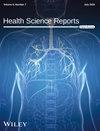Neuropilin-1 as a Neuroinflammatory Entry Factor for SARS-CoV-2 Is Attenuated in Vaccinated COVID-19 Patients: A Case–Control Study
Abstract
Background and Aim
COVID-19 is caused by severe acute respiratory syndrome coronavirus-2 (SARS-CoV-2) as a pandemic infectious disease. So far, it has been known that this virus uses several receptors to enter the host cell, one of which is neuropilin-1 (NRP1). Also, one of the main causes of clinical manifestations, severity of disease, and mortality of patients is cytokine storm syndrome, one of these cytokines being interleukin (IL)-6. Our aim was to study the level of expression of NRP1 and IL-6 genes in COVID-19 patients by using peripheral blood mononuclear cells (PBMCs).
Materials and Methods
Our study population included the test group (80 patients with COVID-19) and the control group (30 healthy individuals). Venous blood was taken from all subjects. After isolating PBMCs from blood using Ficoll, RNA was extracted. Then, cDNA synthesis, the expression level of NRP1 and IL-6 compared to GAPDH housekeeping gene was measured by real-time PCR.
Results
The level of NRP1 gene expression was increased significantly in COVID-19 different groups compared to the control group. Surprisingly, it was observed that the amount of NRP1 gene decreased in the vaccinated group compared to nonvaccinated groups. IL-6 gene expression was also significantly increased in all groups except vaccinated patients compared to the control group. Also, the results indicated that there was a positive and statistically considerable relationship between IL-6 expression level and NRP1 expression level (p = 0.03).
Conclusion
The significant increase in the expression of NRP1 and IL-6 genes in COVID-19 patients, especially in moderate and severe cases, indicates their potential involvement in the progression of the disease, which may serve as biomarkers of disease severity. Also, since these genes play an important role in causing severe inflammation, cytokine storm, and immunopathological complications of COVID-19, further investigations maybe needed to achieve therapeutic goals to control COVID-19 and similar diseases.


 求助内容:
求助内容: 应助结果提醒方式:
应助结果提醒方式:


